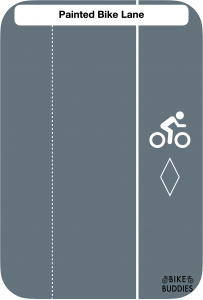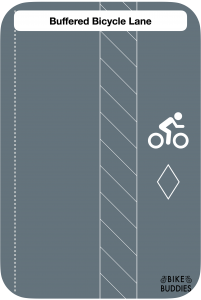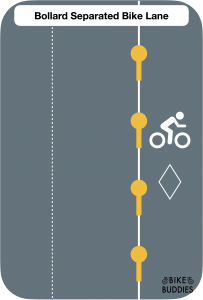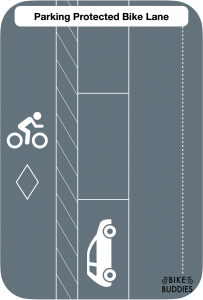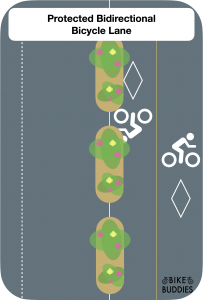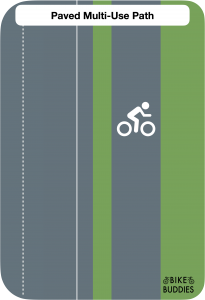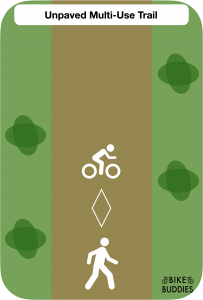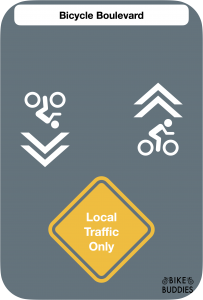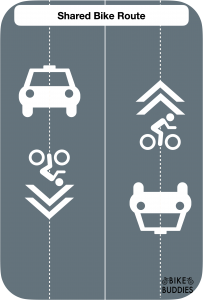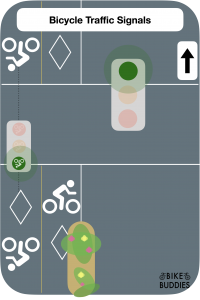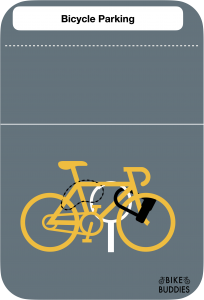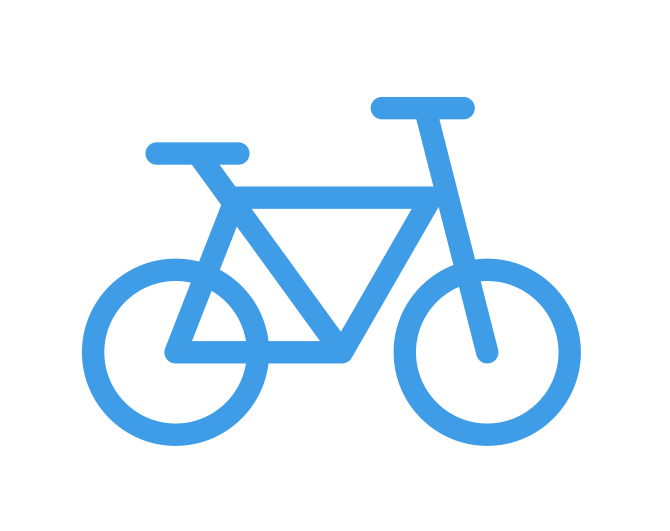Overview
Expandable List
There are countless benefits to biking that make it a great way to get around. Learn more about some of the health, environmental and social benefits by expanding the tabs below!
Cycling for transport regularly has been shown to benefit both physical and mental health. Cycling is a low impact exercise that can get you moving while minimizing strain on joints. Regular physical activity is associated with decreased anxiety and stress among university students and active forms of transportation such as cycling are a great way to incorporate regular physical activity into your daily routine. Like many forms of physical activity, regular cycling has also been shown to reduce the risk of chronic conditions including cardiovascular disease and cancer.
Sources:
Environ. Int. 2018;120:199-206
J Am Coll Health 2013;62:67-74 BMJ 2017;357:j1456
prev. med. 2015;76:103-14
Cycling is an environmentally sustainable mode of transportation and most trips made in large metropolitan areas are short (<5 kilometres) and thus can often be as time efficient, or even faster, than driving. For every kilometre cycled, carbon emissions are reduced by 0.25kg compared to traveling by car. The City of Hamilton, along with many other Ontario municipalities, have declared a climate emergency. Reducing dependency on single occupancy vehicles can be part of our strategy to mitigate climate change. Cycling can also help reduce excessive air and noise pollution in busy areas. By choosing to bike, you can help contribute to more people-friendly streets.
Sources:
Increasing Cycling In Canada, A Guide to What Works
Hamilton declares Climate Emergency
UN Environment: Cycling, the better mode of transit
Share the Road: Benefits of Cycling
Cycling is fun! Being active and spending time outdoors has been shown to contribute to higher energy levels and better sleep. Cycling can also be a great way to explore your community. By biking to new destinations, your navigation skills will quickly improve and you’ll be exposed to new areas.
Cycling is affordable and convenient; it can save you time and money for short distance trips and can be a great way to connect different transportation modes as part of a multi-modal journey.
Cycling can also be a great way to socialize and build relationships. Whether going for recreational rides, meeting other cyclists in your community or engaging with community organizations, advocacy or mentorship, the cycling community is a welcoming space for people of all ages and abilities.
Sources:
The Social Effects of Biking
Sports Med. 2012; 36:767-80
Extrem Physiol Med. 2013;2:3
Friendly Streets Toolkit
Information Box Group
Navigating the City Learn More
Learn about routes and Wayfinding resources to take your from your desired origin to destination.
Safety & Bike Handling Learn More
Learn more about how to ride a bike safely, including how to prepare before riding and how to ride in different traffic settings.
About Bikes Learn More
Learn more about the components of a bike that are helpful when buying a bike or learning to ride.
Hamilton Supports Learn More
Learn where you can access Hamilton Bike Repair, Bike Share, and other tools.
Ontario Supports Learn More
Learn more about finding resources if you are outside of Hamilton.
Navigating the City
Hamilton’s Cycling Network
As of 2018 Hamilton’s cycling network consisted of 418km of cycling routes, about 150km of which are designated bicycle lanes or multi-use recreational trails. Hamilton plans to implement around 500km of additional cycling routes over the coming years outlined in the Cycling Master Plan.
You can use a map of Hamilton’s Urban Cycling Facilities to help plan your route or view their bikeways as an interactive layer of Open Data.
Additionally, you can check out HamOnt Healthy Loops from the Everyone Rides Initiative for some fun and safe routes you can bike in your neighbourhood to get outdoors and active.
Linear Cycling Infrastructure
Conventional |
|
Buffered |
|
Bollard Separated |
|
Parking Protected |
|
Bi-Directional |
|
Raised and Separated Bike Path |
|
Paved Multi-Use Trail |
|
Unpaved Multi-Use Trail |
|
Neighbourhood Greenway (aka Bicycle Boulevard) |
Typically on residential streets these are low volume and low speed streets where active travellers such as cyclists and pedestrians are given priority over motorists. There are different “levels” of bicycle boulevards depending on combination of infrastructure and street characteristics. Infrastructure can range from signage to pavement markings to intersection treatments to traffic calming to traffic diversion. |
Shared Route |
|
Non-Linear Cycling Infrastructure
Bike Box |
|
- Examples of both types of bike boxes are featured from 2:00 onwards on Hamilton’s video explaining the cannon street bidirectional bike lanes
Bicycle Traffic Signals |
At some intersections, bicycle traffic lights are used to control intersections for cyclists. This is particularly important for contraflow bike lanes where cyclists travel in the opposite direction of traffic (such as Cannon St). |
Bicycle Parking |
Bike racks come in different forms but the best way to ensure your bike is locked as well as possible to lock both the frame and any quick release wheels to the rack. |
- Make you note down your bike’s serial number, this can help you find your bike if it is ever stolen. An additional precaution you can take is to register your bike with garage 529, a free bike recovery service.
- A map of all of Hamilton’s Bike Rack locations is available through Open Data
Bike Buddies Routes
Want to try biking to get class, errands or recreational spaces but don’t know what route to take? A group of SUSTAIN 3S03 students mapped out safe biking routes to student identified destinations from McMaster University. Give them a try to get outdoors and get active while you travel around town!
McMaster to Westdale Video
Follow along as a group of students take you through the route from McMaster to Westdale (Food Basics King St) and share tips on how to navigate traffic safely!
Expandable List
A flat paved path stretches from princess point to Bayfront park and then further along the waterfront to piers 4 and 7. Be sure to watch out for other trail users and yield to pedestrians. The trail is also a great connector to the downtown, it can take you from the Westdale area off Longwood to Bay St which has a bike lane connecting to the Cannon Cycle Track as well as passing the west side of Jackson square. The trail is part of the Great Lakes Waterfront trail and a portion of the HamBur loop.
The Hamilton-Brantford Rail Trail is a 32km trail connecting the 2 cities through a beautiful, flat trail surrounded by nature.
Notes:
- The trail is not lit or paved with the exception of a short connection heading through Ainslie Wood in Hamilton from Ewen Rd to Studholme Road.
- This section through Ainslie Wood crosses many streets; be sure to stop at every intersection.
- To access the trail from McMaster head west along Sanders Blvd then take Westbourne Rd south to the trail just past Main St.
- Around Sulphur Springs Rd, the trail connects to the Dundas Valley Conservation area which offers amazing trails for hiking and some for mountain biking
Adjacent to Mountain Brow Blvd a 2 metre wide paved shared path takes you from Mohawk Rd E to Oakcrest Dr (a block east of the Jolly Cut). It features stunning views of the Niagara Escarpment and the lower city below.
Notes
- West of Oakcrest the bike lane ends and Mountain Brow Blvd becomes a busy artery; unless you are comfortable mixing with traffic be sure to turn on Oakcrest and follow the signed on street route.
The Escarpment Rail Trail is a roughly paved trail that connects Corktown park with Albion Falls taking you up the escarpment. The trail follows the path of an old railroad track with a slight incline the whole way when heading east.
Notes:
- The Wentworth stairs connect the trail to Wentworth St South, however, the stairs do not feature a bike trough. A SoBi bike station is located at the bottom of the stairs.
- The Kennilworth Stairs on the other hand are bike accessible with bike troughs for rolling your bike up or down.
The Red Hill Valley Trail is a mostly gravel trail connecting to both Confederation Beach Park and the Bruce Trail. Its southern section is technical featuring some steep hills.
Safety & Bike Handling
Whether you are an experienced cyclist or a new rider, safety should be your first priority. You should always use your discretion to be as safe as possible but preparing in advance and understanding your rights and responsibilities when sharing the road is a good place to start.
Expandable List
-
GEAR:
- In Ontario your bike must be equipped with a bell at all times. Within 30 minutes of sunrise/sunset (and at night) you must also have a rear red light (or reflector) and front white light. Non compliance can result in a total fine of $110 (1).
- Learn about other bike gear like mirrors and reflectors
-
HELMET:
- A properly fitting helmet should enable you to fit 2 fingers between your forehead and the helmet, should form a “V” shape around your ears and leave space for 1 finger between the strap and your chin. You can remember helmet fit as the 2-V-1 rule. In Ontario, the law requires all cyclists under the age of 18 or anyone riding on a highway to wear a helmet. Non-compliance can result in a fine of $75 (1).
-
EQUIPMENT CHECK
- Double-check that your front and rear brakes are working, your tires are inflated and your chain is lubricated. Be prepared and learn what to look for in an ABC check (Air, Brakes and Chain Check).
As a cyclist you are subject to the same rights and regulations as a vehicle.
-
BIKE LANES
- Stay in the bike lane if one exists, however, cycling in areas without a designated bike lane may be required to connect routes.
- When bike lanes are not present, avoid high volume arterial streets unless you are an experienced cyclist who is comfortable mixing with traffic. You may consider planning to use mostly residential or side streets to avoid heavy traffic.
- Learn more about different types of Hamilton cycling treatments
-
STRAIGHT LINE RIDING
- Ride in a predictable straight line and avoid weaving in and out of traffic or parking lanes as other motorists may not be aware of your whereabouts.
-
TAKING YOUR LANE
- Unless you can keep a distance of 1 metre from the curb riding adjacent to traffic, then it is safer to ride in the centre of the lane. In fact, constantly moving to the right can put you in a dangerous position either if a lane becomes narrow, or if parked cars put you at risk of dooring (getting stuck by a motorist opening their door in your path). Do not feel pressured to compromise your safety for the convenience of a motorist passing you. When a roadway has more than one lane, stay in the right-most lane.
-
SIDEWALKS
- It is illegal to ride on the sidewalk in Hamilton as you put pedestrians and other sidewalk users in danger. If you must enter a pedestrian space such as a sidewalk or crosswalk, dismount your bike.
Learn more about other safety considerations when riding from the Ministry of Transportation.
-
STOPPING
- Stop at all stop signs and controlled intersections, the same as if you were a car.
-
GOING STRAIGHT
- Do not enter a right turn lane if going straight.
- Be cognizant of right turning traffic beside you if in a right hand bike lane, you might have the right of way but motorists are sometimes unaware of cyclists coming from behind them.
-
TURNING RIGHT:
- Signal by extending your right arm straight outwards OR your left arm bent upwards; always yield to pedestrians. Always slow down and proceed with caution as motorists may not be aware of your presence.
-
TURNING LEFT:
- ONE-STEP: If you are comfortable you can make your turn left with traffic, to do so you must:
- Enter the appropriate left turning lane (the leftmost lane unless two left turn lanes exist). To change lanes, check over your shoulder, signal the lane change and proceed when safe.
- Signal a left turn by extending your left arm out straight.
- Before proceeding always stop and ensure you are safe from oncoming traffic.
- ONE-STEP: If you are comfortable you can make your turn left with traffic, to do so you must:
While a one-step left turn is safe at all way stop signs and intersections with advanced left turn lights, other settings may require a 2 step turn.
Learn more by watching a video on how to cycle through intersections.
-
- TWO-STEP: Alternatively, you can make your left turn “like a pedestrian”. This involves:
- Go straight through the intersection adjacent to the crosswalk
- Stop, turn your bike to face left, then when the light changes, proceed straight again
- TWO-STEP: Alternatively, you can make your left turn “like a pedestrian”. This involves:
Remember if you are entering a pedestrian space such as a crosswalk or sidewalk you should first dismount your bike.
Learn more about navigating intersections from CycleTO
Cycling in the winter can be intimidating to some riders, but if you are adequately prepared it can continue to be a fun, affordable and sustainable mode of transportation year round.
-
DRESS IN LAYERS
- Always wear a warm base-layer, and water-proof outer layer, then, depending on the temperature choose the appropriate layers to keep you warm without over-heating. A lot of perspiration can actually end up making you chilled as your clothing gets damp.
- Your hands may be the first part of you to get cold so make sure you wear a warm pair of gloves with which you can still manoeuvre your brakes.
-
SNOW & ICE
- If you ever feel you don’t have control on your bike, don’t ride.
- That said, depending on the tread and width of your tires, you may be surprised that you can safely cycle through some snow. Generally, knobbier tires can give you better grip on mucky surfaces and a wider tire gives you more traction. You may find it worthwhile to switch to tires that are wider or have greater tread for winter. Or if you feel your bike is not appropriate for winter, you may consider taking a SoBi.
- Lowering your tire pressure can also increase traction, however, beware that in cold temperatures tires lose their pressure more quickly so you may still need to fill them often.
-
CENTRE LANE RIDING
- If there is no bike lane or it is not plowed, avoid sections close to the curb which may be icy or have accumulated snow and ride in the centre of the lane.
-
TAKE YOUR TIME
- Plan ahead to give yourself time to take a less busy route or avoid any sections where you feel unsafe.
- Side streets may enable you to avoid busy traffic while arterioles are generally plowed faster and better maintained. Find what works for you.
-
HAVE A BACK-UP PLAN
- If conditions worsen before your return trip, have a plan to get home safely
- This may mean taking your bike on the HSR, walking, or having someone you can call.
- MAINTENANCE
- When possible, keep your bike in a covered location to avoid getting ice in your chain.
- Try to clean your bike after winter rides as debris can accumulate.
Read more about the benefits of winter cycling
Check out this guide on winter cycling for More tips
About Bikes
What to know and look for when buying a bike: buying a bike can be confusing as there are many different types and features available, however, there are often many options that can meet your needs. Check out one of the many amazing bike shops in Hamilton to help you in your search.
Types of Bikes
Road bikes often have thinner tires and drop handlebars. The top bar is higher up and riders are more bent over. They are lighter and thus popular among folks who want to go quickly on smooth (paved) terrain. However, with less grip, their features are less appropriate for riding on gravel and in wet environments.
Mountain bikes are moderately upright and often have thicker tires with more “tread” enabling for greater grip on dirt and gravel surfaces. They also often have shock absorption which can make going over bumps more comfortable.
Hybrids are popular with urban riders and have features between road bikes and mountain bikes (e.g. weight, tire width). They are designed to handle multiple riding conditions but features differ between bikes. Some types of hybrids are also called “trekking”, “cross”, or “commuter/city” bikes.
Some other jargon you might encounter is “fixie”, “cruiser”or “BMX”.
- Fixie refers to fixed gears, the bike is a single speed meaning that the gears cannot be changed. This makes the bike lighter but can make hills challenging.
- Cruisers are designed for sitting more upright with raised handlebars. They are oriented towards comfortable riding, feature a low top tube and are often also a single-speed.
- BMX stands for bicycle moto-cross which are designed for stunt and off-road sport riding.
Different styles of adaptive bikes such as tricycles are also available. The Everyone Rides Initiative offers a selection of adaptive bikes to Hamiltonians.
Some other jargon you might encounter is “fixie”, “cruiser”or “BMX”.
- Fixie refers to fixed gears, the bike is a single speed meaning that the gears cannot be changed. This makes the bike lighter but can make hills challenging.
- Cruisers are designed for sitting more upright with raised handlebars. They are oriented towards comfortable riding, feature a low top tube and are often also a single-speed.
- BMX stands for bicycle moto-cross which are designed for stunt and off-road sport riding.
Different styles of adaptive bikes such as tricycles are also available. The Everyone Rides Initiative offers a selection of adaptive bikes to Hamiltonians.
Selecting a bike
1. FRAME SIZE
-
- no matter what style bike you choose, ensure the frame is the right size for the length of your legs. This is generally done by comparing your inseam (a measurement of the length of the inside leg from the inner thigh to the foot) to the seat tube of a bike (bar connecting the pedal to the seat). Additionally, when standing over your bike, you should have at least one inch clearance above the top tube. Generally road bikes require a slightly larger frame size compared to hybrid or mountain bikes. A frame size chart can help you find the right size
2. SEAT HEIGHT
-
- Even with the right frame size, you want to ensure your seat height has your leg almost fully extended when the pedal is closest to the ground. By avoiding overly bent knees you will have more power and reduce strain on your knees. Seat height is usually easily adjustable.
Learn about bike body positioning, fitting your bike and making adjustments. The angle of your handlebars and height of your stem can also sometimes be adjusted to improve fit.
Other features you might come across are the:
- Types of brakes
- Number of ‘speeds’ (number of combinations between front and back gears)
- Material of the rims (the outer edge of the wheel)
- Tread of the tires
- Suspension or shocks
Don’t be overwhelmed in a commuting or recreational setting, often many variations of the same feature are appropriate.
If you are interested in these features:
- Rim brakes are the most common, least expensive and easiest to maintain and replace
- A few gears often will provide flexibility for hills without too much added weight, knowing how and when to shift gears is often the most important
- Aluminum rims are generally lighter but less durable than steel rims. Modern bikes almost exclusively use aluminum but steel rims are common on older bikes.
- Tires with lots of tread or knobs provide greater traction for turning on sandy terrain but increases friction compared to smoother tires
- Full or Front-suspension bikes absorb shocks on rugged terrain and are common on mountain bikes but generally not needed for urban cycling
- Buying your bike rather than used can offer many benefits. You can save money while recycling a bike and reducing your consumption.
- Refurbishing a used bike can also be a great way to learn basic bike repair skills and/or customize your bike to align with your needs and style.
Hamilton has many used bike shops and co-ops that can help you find or restore a used bike.
Remember you can often always add items to your bike to make it more convenient for you. Some items include mirrors, carriers, trailers, baskets and fenders.
1. BASKETS & REAR RACKS
-
- Adding storage to your bike can help make commuting more convenient. A front basket could be a quick and easy addition but back storage in the form of panniers or a crate/basket first requires a rear rack. Milk Crates are a popular and easy way to add storage to an existing rear rack. Using zip ties is a quick and tool-free way to install a milk crate.
2. MIRRORS
-
- Mirrors can make it easier to check for oncoming traffic when changing lanes. Both handlebar mirrors and helmet mirrors are widely available.
3. FENDERS
-
- If you frequently ride in the rain or snow, fenders can make your commute more comfortable, these guards that frame your wheels to reduce the spray of water and mud onto your back and face.
EVERYDAY MAINTENANCE:
While more in depth bike maintenance is required semi-annually to keep your bike running safely there are a few things you should be doing regularly
1. CHAIN:
- Cleaning and lubricating your drive chain is important to keep your bike riding smoothly. Depending on how often you ride, you should lubricate your chain between once a week and once a month. If you notice “clicking” when riding or sticking when changing gears, your chain could be rusted. Watching a video is a great way to learn how to care for your chain.
2. TIRES:
- Depending on how often you ride, you may need to fill your tires as often as every 1-2 weeks. If you have a pump, you can fill your tires at home, or else you can fill your tires at a fixit station. The sidewall of your tire will have an engraved number indicating the correct pressure in psi. Note there are two common types of tire valves, Schrader and Presta Valves learn more about each type here to see if you require a valve adapter.
- If your tire is not holding pressure, your innertube could have a hole. This can be fixed by either patching or replacing the innertube.
Hamilton Supports
Information Box Group

Bike Share Learn More
Hamilton’s bike share known as SoBi (Social Bicycles) is a great option if you don’t have a bike, want the convenience of making one-way trips or don’t want to deal with maintaining or storing a bike. Monthly passes, pay-as-you-go and student options are all available.
Bikes on Buses Learn More
Integrating transit with cycling allows you make longer journeys more convenient while still being affordable and sustainable.
In Hamilton you can load your bike on the front rack of any HSR bus.
Mountain Climber Program Learn More
In Hamilton, the bus can also be a safe and convenient way to get up and down the mountain as a cyclist. The Mountain Climber program allows cyclists to ride the HSR up and down the Niagara Escarpment for free.
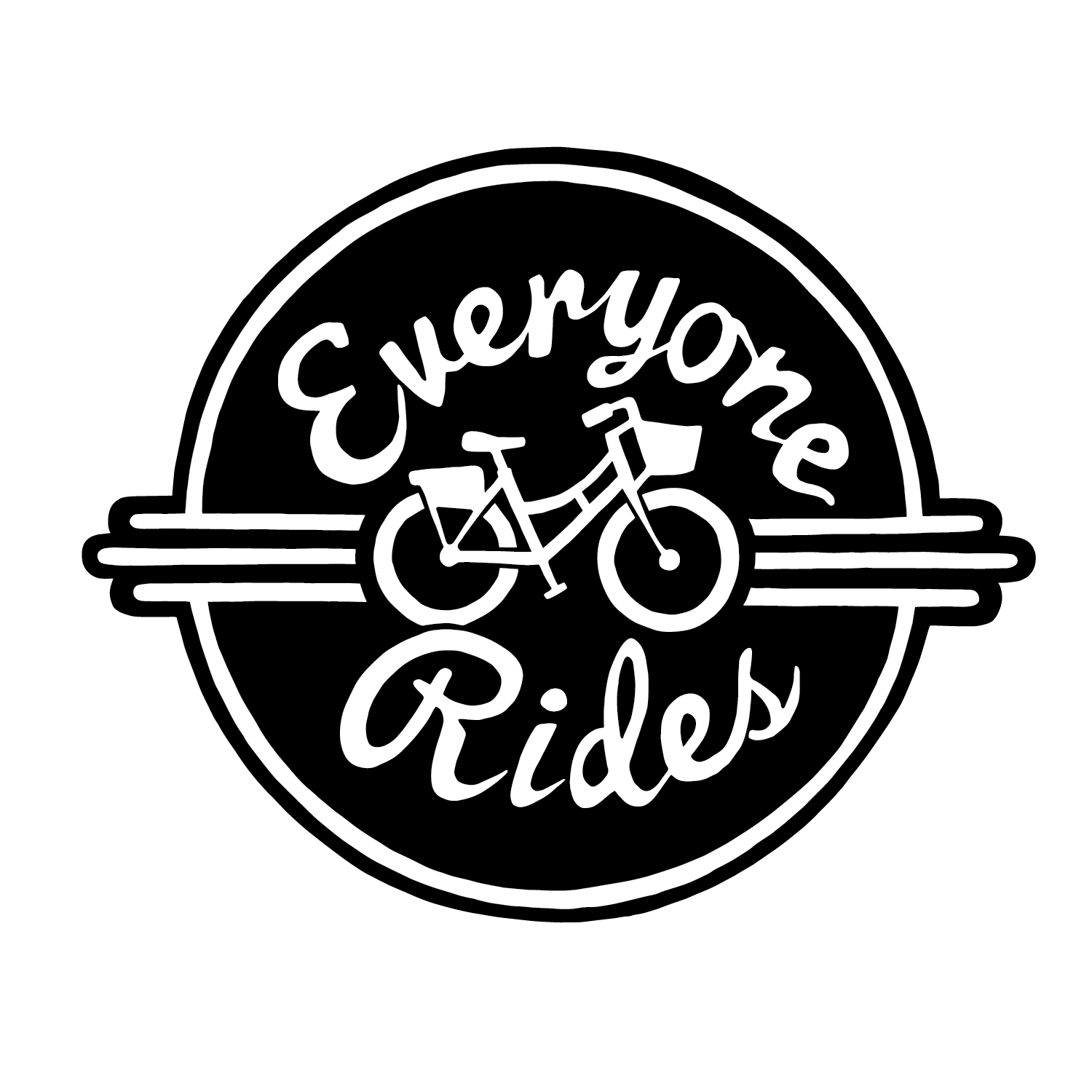
EVERYONE RIDES INITIATIVE Learn More
ERI focuses on removing barriers to accessing bikes in order to increase equity in cycling. They are also facilitate group rides that build and support the cycling community
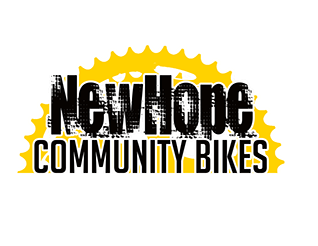
New Hope Community Bikes Learn More
A non-profit bike hub offering:
- cycling and bike repair education
- Affordable refurbished bikes and used bike parts
- DIY bike repair co-op
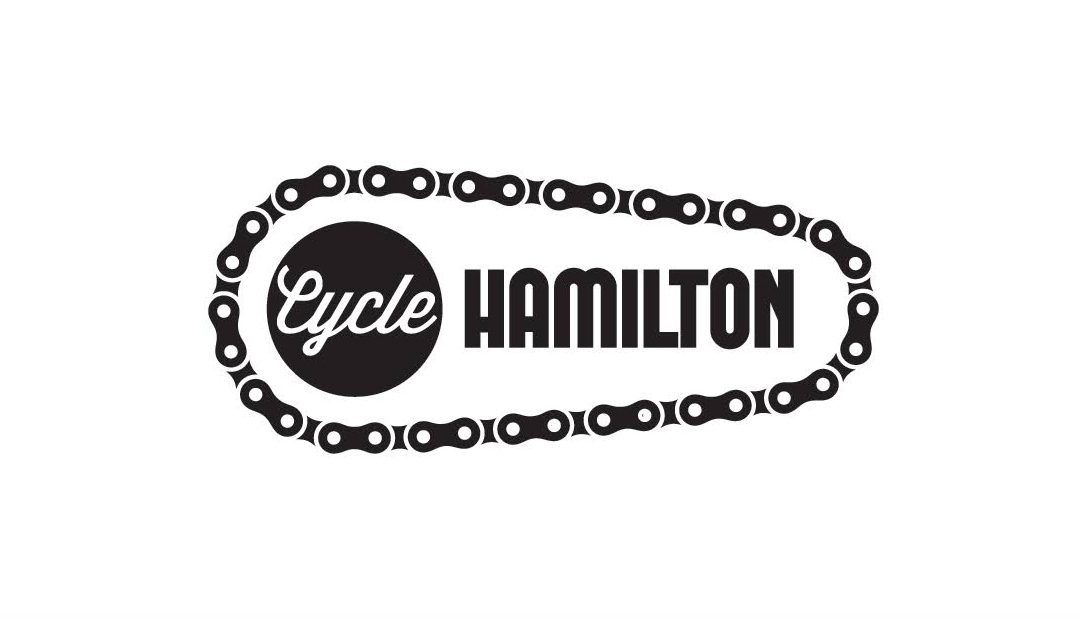
Cycle Hamilton Learn More
An advocacy and community group working to make cycling accessible for all ages and abilities and inspire people to ride their bikes
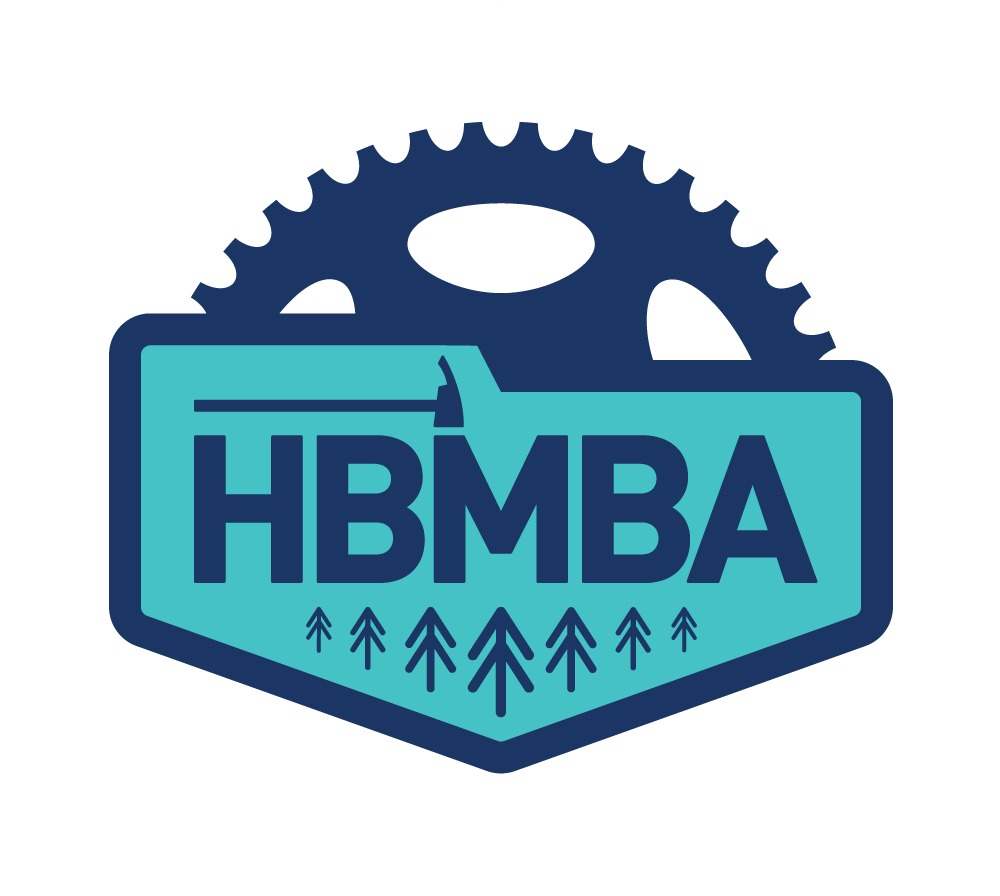
Hamilton Burlington Mountain Biking Association Learn More
A volunteer trail association that helps maintain trails, grow community, and advocate for mountain biking
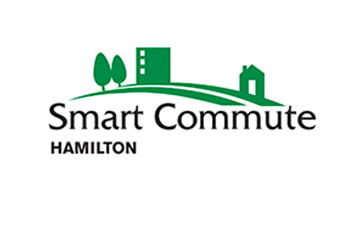
Smart Commute Learn More
A program helping employers and commuters explore sustainable and multi-modal commuting options

